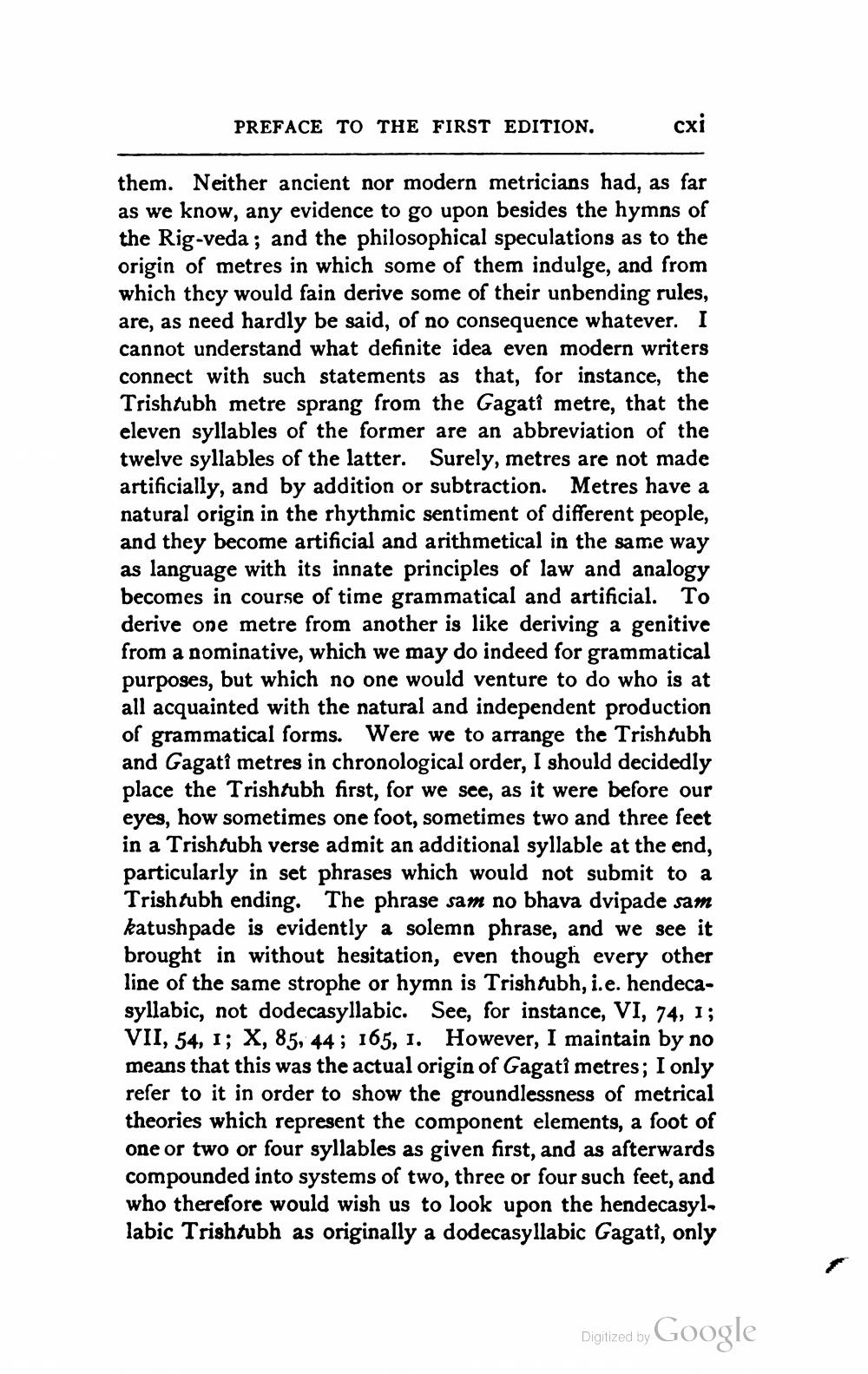________________
PREFACE TO THE FIRST EDITION.
схі
them. Neither ancient nor modern metricians had, as far as we know, any evidence to go upon besides the hymns of the Rig-veda; and the philosophical speculations as to the origin of metres in which some of them indulge, and from which they would fain derive some of their unbending rules, are, as need hardly be said, of no consequence whatever. I cannot understand what definite idea even modern writers connect with such statements as that, for instance, the Trishtubh metre sprang from the Gagati metre, that the eleven syllables of the former are an abbreviation of the twelve syllables of the latter. Surely, metres are not made artificially, and by addition or subtraction. Metres have a natural origin in the rhythmic sentiment of different people, and they become artificial and arithmetical in the same way as language with its innate principles of law and analogy becomes in course of time grammatical and artificial. To derive one metre from another is like deriving a genitive from a nominative, which we may do indeed for grammatical purposes, but which no one would venture to do who is at all acquainted with the natural and independent production of grammatical forms. Were we to arrange the Trishtubh and Gagatî metres in chronological order, I should decidedly place the Trishtubh first, for we see, as it were before our eyes, how sometimes one foot, sometimes two and three feet in a Trishtubh verse admit an additional syllable at the end, particularly in set phrases which would not submit to a Trish tubh ending. The phrase sam no bhava dvipade sam katushpade is evidently a solemn phrase, and we see it brought in without hesitation, even though every other line of the same strophe or hymn is Trishtubh, i.e. hendecasyllabic, not dodecasyllabic. See, for instance, VI, 74, 1; VII, 54, 1; X, 85, 44; 165, 1. However, I maintain by no means that this was the actual origin of Gagati metres; I only refer to it in order to show the groundlessness of metrical theories which represent the component elements, a foot of one or two or four syllables as given first, and as afterwards compounded into systems of two, three or four such feet, and who therefore would wish us to look upon the hendecasyl. labic Trishtubh as originally a dodecasyllabic Gagati, only
Digized by Google




